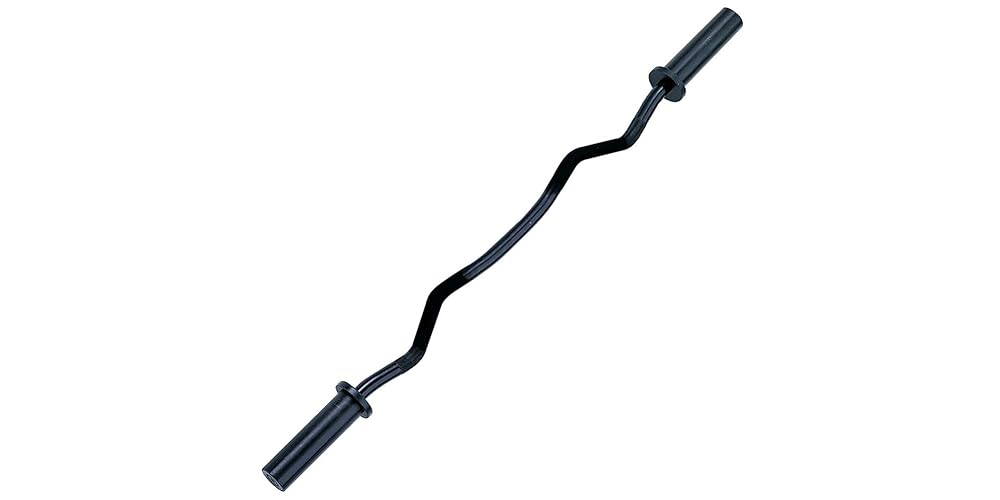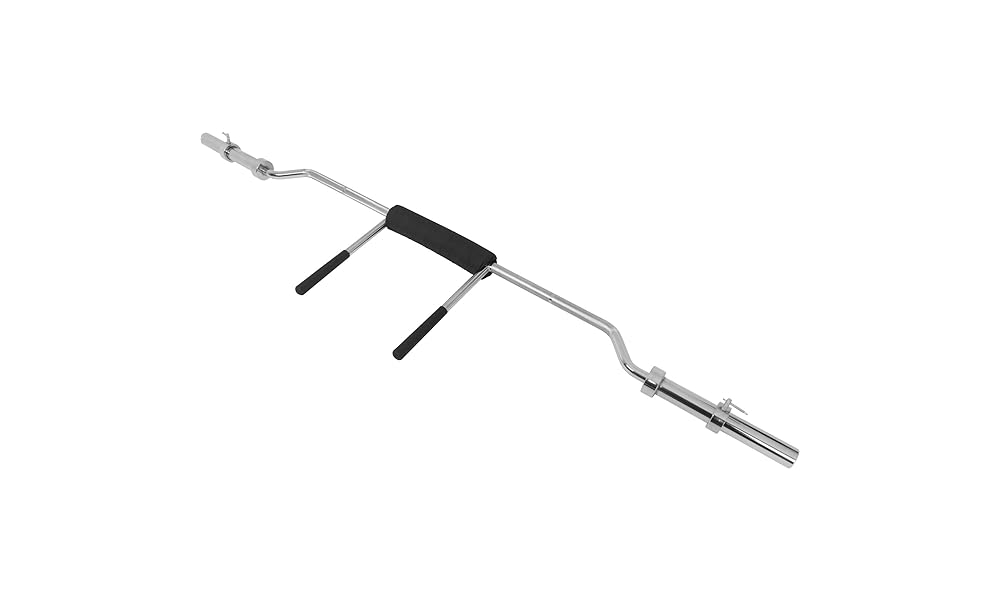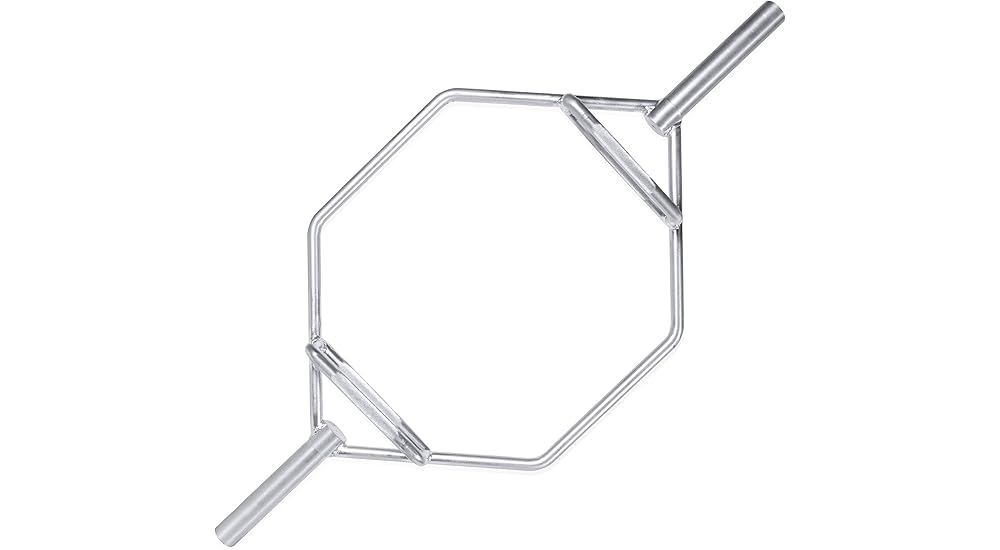If you’re a gym enthusiast, then you know how weight can affect your training sessions. Especially if you’re a weightlifter.
Weight is a crucial factor even for people looking for low-impact weightlifting.
When lifting weight, there’s a higher chance you’re not including the bench press bar weight in your calculations! And the fact is: bench press bars have weights that add to your weightlifting.
And since there are various bench press bars, you can be sure to find weight variation in weightlifting.
So, let’s discuss how much does a bench press bar weigh and know why they vary from one place to another.
Also, let’s learn about the standard bench press bar weight and what to expect when weightlifting using them.
How Much Does A Bench Press Bar Weigh?
For us to understand the bench press bar weights, let us look at the following standards:
1. Olympic Bench Press Bar Standard
There are a lot of standard bench press bars. But the Olympic bench press bars are the most standard. They weigh 45 pounds and are 7.2 feet long for men. They are high-quality since sturdy metals go into their construction.
The outer ends of these barbells are 2.0 inches in diameter for adding weights. And their grip section is 4.3 feet long, with a 1.1-inch diameter. And as you’d expect, these barbells have excellent grips.
The grip sections have grip marks placed 36 inches apart. The bars are elastic and can withstand elastic forces if you drop them overhead lifts!
Besides being used in the Olympics, they’re also used in Commonwealth games, World Championships, and highest-level competitions.
The bench press bar for women is the same in structure as the men’s bars. The only differences are weight and length. They weigh less (33 pounds) and are shorter (6.6 feet long). The diameter of the grip section is also smaller — 0.98 inches.
2. Other Bench Press Bar Standards
The Olympic bench press bars require larger grips. Also, they weigh a few extra pounds. But not every weightlifter has a larger grip for an Olympic bench press bar.
And some gyms have a solution for such people.
Some gyms have bench press bars that weigh 33 pounds with a slightly thinner grip section.
Despite the smaller grip section diameter, these barbells are still strong. And they don’t “whip” (bend) since high-quality American steel goes into their construction.
You might ask yourself: “What are the other standard bench press bars?” Let us look at a few examples.
-
EZ Curl Bar
First, these barbells weigh 15 pounds. These barbells have a curved grip section. This grip section design makes them ideal for bicep curls, lying triceps extensions, and upright rows.
The curl bars reduce the supination of the forearm and wrists, thus reducing muscle stress that might cause injuries.
Since your wrist will not fully supinate, your biceps curl exercises will be less effective. These bars are also shorter and are stored in stands.
-
Swiss Bar
This bar weighs 35 pounds and is used for rowing, pressing, and curling. If you’re looking to develop your shoulders more, this could be your barbell. Also, it is the barbell to look for if you lift weights but have shoulder problems.
-
Cambered Bar
If you are looking to exercise your posterior muscles, you might want to use a cambered or arched bar. Just as the name suggests, this barbell is arched in shape. It comes in handy during squat exercises.
However, this bar is for experienced weightlifters. It works to develop your back and gluteus muscles as well.
The result is impressive stability that will help you in your daily activities.
It is yet another heavy barbell since it weighs 45 pounds. And if you add weight plates, you will be lifting more weight.
-
Safety Squat Bar
First, this barbell weighs between 60-65 pounds! This is a specialty bar that has ‘arms.’ The arms go around your neck and they have sufficient padding. You typically wear this barbell around your neck when lifting weights.
The padding makes sure the bar comfortably sits on your neck and shoulders. Also, the arms give you a good hold of this barbell.
Some weightlifters might lack shoulder mobility when lifting weights. Others might feel pain doing traditional back squats. In either case, this barbell is a great choice.
The padding of the yoke around your neck will alleviate the pain. And the padded arms give you more grip and control. As such, this is another standard bar option for weightlifters.
It is a nice bar for weightlifting during squats. It helps develop back and glute muscles better than the traditional squat bars.
-
Trap Bar
This barbell weighs 45 pounds, and it is common in most gyms. It is also called a ‘hex’ bar due to the shape of its grip section. The grip section takes the shape of a trapezoid (hexagon) hence the name.
This grip section design lets you enter the middle of the barbell for more stable deadlifts.
Getting in the middle of this bar makes deadlifts go easier on your joints. It also has handles that let you acquire a proper deadlift posture.
This could help you lift heavier weight plates with less stress on your joints! If you also want to perform shrugs, these are the bars to opt for.
Knowing barbells is important if you’re a weightlifter. You get to know which bar to choose when performing a given weightlifting exercise. Let’s proceed to other details concerning weightlifting.
How Do You Obtain The Total Press Weight?
Calculating your total press weight is important. It lets you know your weightlifting limits, and whether you can break new records. So, how do you calculate these values?
It is very simple: add the weight of the barbell that you are working with to the weight of the weight plates. For example, you might be lifting 100 pounds of weight plates using a 45-pound press bar. In this case, your total press weight is 145 pounds.
When weightlifting, be sure to observe safety concerns. You can weightlift under the guidance of a professional personal trainer. Your safety comes first in whatever you do and weightlifting is no exception!
See also: How Much Can The Average Man Bench Press?
Conclusion
The choice for a barbell depends on a few factors: your training goals, experience level, and body anatomy. There are various barbells to choose from. We have looked at some bench press bars and their weights.
Finding the barbell that will yield the result you desire might be easy after reading this post.
You can transform your workouts using the recommended barbells. Your only task is to take action and work out your body the right way.














